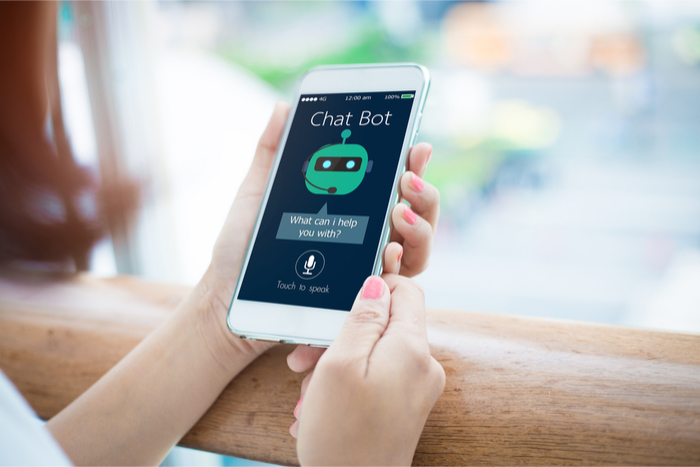
In the 1960s, Massachusetts Institute of Technology professor Joseph Weizenbaum came up with a revolutionary idea: a computer-based script that would take in phrases and generate a response.
The result, ELIZA, seemed like a careful listener. Much like a therapist, she would often respond by asking how someone felt about a particular issue. This early chatbot was so effective that some of its users believed ELIZA actually understood them, but, in reality, she was only deconstructing their input and sending it back to them in a way that would advance the conversation.
ELIZA was a hit, “a sensation on the MIT campus and quickly spread to other universities,” according to the Independent.
Another chatbot would take the internet by storm in the early 2000s. This time, it lived within the now-defunct AOL Instant Messenger. The SmarterChild chatbot employed a similar strategy to those used today: It reached consumers on a platform they already used, much like current chatbots might live on platforms such as Facebook Messenger.
The chatbot was remarkable because it could do more than just provide conversation or a little bit of fun: It could offer information, too. Through interacting with SmarterChild, users could learn about the weather, movie listings or even stock information. But, providing this level of constant interaction wasn’t easy.
“All of that interaction was editorialized and programmed, and therefore required an enormous staff as it grew,” Robert Hoffer, co-creator of the SmarterChild chatbot, told Fast Company.
SmarterChild also faced challenges with its business. All of that information — movie times, stock quotes and the like — required partnerships with various provider companies, and the chatbot didn’t have the benefits of, say, an application programming interface (API) to automatically add updates to its system.
The service was overwhelmed with queries. As a result, it consumed too many system resources, so its provider, ActiveBuddy, discontinued it in 2002.
Chatbots soon entered customer service with companies like Xiaoi, which added one to MSN’s messaging service in 2004. In addition to the types of information that SmarterChild offered — including weather reports and stock data — the service was able to retrieve specialized field knowledge and work as a virtual customer assistant.
“[But] finding customers was difficult at first for Xiaoi,” according to Topbots. “The AI-driven solution was too new to gain market traction and most prospects opted to stay on the sidelines.”
But the company was able to find a market, and its first client was Jiangsu Mobile. Through the chatbot, customers on Jiangsu’s website could have their questions addressed through text messaging. Jiangsu saved money with the technology, too, with some estimates saying its labor costs fell by approximately $300,000.
Today, Xiaoi handles more than 200 million conversations daily. According to its website, it provides “solutions that replace or assist people with robots to complete service work.” It also helps “companies save manpower, reduce costs, and improve service quality.”
Chatbots Hit The Malls
Now, chatbots are even helping customers navigate malls. More than 200 Simon Property Group malls are trying out a chatbot concierge capability, enabling customers to chat with them via Facebook Messenger.
The bot can help shoppers find an ATM or restroom, browse restaurants in the shopping center or answer specific questions by routing queries to mall representatives — with mixed results, depending on how quickly those representatives see and respond to the questions. Some customers have waited hours for a response, in which time they were surely able to locate the merchandise they wanted by simply wandering around.
The experience was similar with bot-delivered discount codes for individual stores. In some cases, the cashier entered the code only to receive an “invalid code” notice.
It’s early days for this chatbot technology application, though, so the experience can (hopefully) only get better before shoppers give up on mall chatbots altogether, or it will all have been for naught.
But chatbots are expected to handle 25 percent of customer service functions within two years, according to Garter research. That’s good news for companies in terms of freeing up staff, and good for consumers who hate waiting on the phone.
Will consumers embrace chatbots as they begin to handle more of their questions and concerns? Only time will tell.